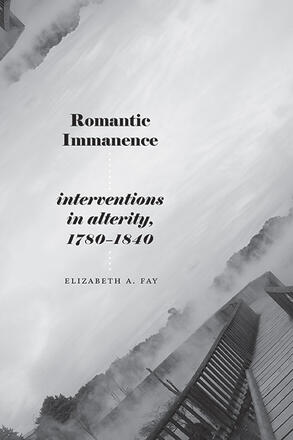
Romantic Immanence
Interventions in Alterity, 1780–1840
Alternative formats available from:
Offers a new, Spinozist framework for understanding encounters with otherness in Romantic literature as experiences of immanence.
Description
Romantic Immanence examines literary examples of an alternative experience of otherness—an experience of alterity the Romantics understood as an embodied, immanent encounter with raw reality. The Romantics' enthusiasm for encounters in nature and the imagination that exceeded the limits of rational thought is well known. Yet these encounters have largely been interpreted in terms of the sublime or the Gothic. Drawing attention to the influence of Spinozist and Stoic philosophy on Romantic thought and aesthetics, Elizabeth A. Fay argues that immanence was another, perhaps even more important, form of alterity, particularly during this era of social and political upheaval. Investigating works such as Coleridge's Rime of the Ancient Mariner, Dorothy Wordsworth's Grasmere Journals, and Percy Shelley's Triumph of Life alongside Schelling's unfinished Ages of the World and Schlegel's Athenaeum Fragments, Fay demonstrates how Romantic immanence, despite going largely unrecognized with the loss of its initial context, remains vividly present in these works.
Elizabeth A. Fay is Professor of English at the University of Massachusetts Boston. She is the author of Romantic Egypt: Abyssal Ground of British Romanticism and Fashioning Faces: The Portraitive Mode in British Romanticism, among other books.
Reviews
"Fay brings together two much discussed topics—alterity and immanence—to reveal new ways of thinking about both. Especially welcome is the book's interest in turning away from alterity as necessarily bound with violence and abnegation. Romantic Immanence turns instead toward alterity as a joyful revelation the Romantics used to support major reconsiderations of ethics and ethical action." — Jonathan Crimmins, author of The Romantic Historicism to Come